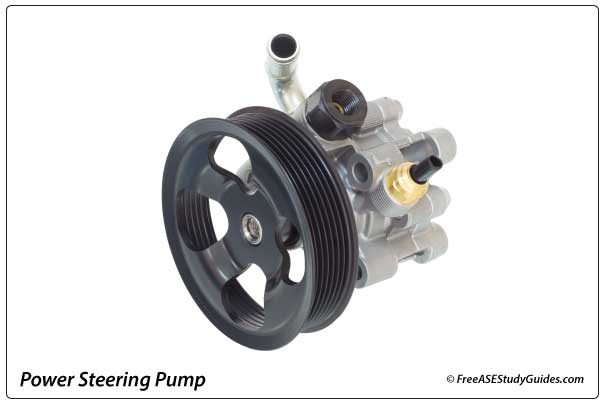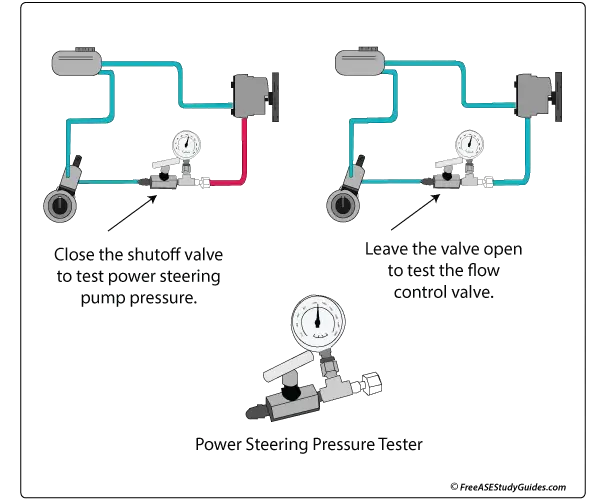Power Steering Pressure Test

A power steering pressure test checks the system's fluid pressure, testing the high-pressure lines, power steering pump, control valve, and pressure relief valve. Check for external leaks and top fluid levels before beginning this test. Review the manufacturer's specifications and procedures before proceeding, and listen for any strange noises while opening and closing the valve.

1. With the engine stopped, install the pressure gauge with the shutoff valve in the open position. Place a thermometer in the reservoir.
2. Start and idle the engine with the valve in the open position. Turn the steering wheel left and right several times to release air bubbles and bring the fluid to operating temperature.
3. With the gauge connected, close the shutoff valve for 5 seconds and compare it with the manufacturer's specifications. Holding the valve closed longer will cause the fluid to overheat, possibly damaging the power steering pump. If the reading is not within specifications, replace the power steering pump.
4. With the shutoff valve in the open position, check the gear housing for leaks by holding the steering wheel against its stop and checking fluid pressure against specifications. Do not hold the wheel in this position for too long. Power steering systems reach pressures above 1000 lbs per square inch. If the pressure is too low, the internal gear housing may have an internal leak, undetectable during a visual inspection.
5. Check the flow control valve's operation with the shutoff valve in the open position and record the reading at 1000 RPM and 3000 RPM. Compare these two readings against specifications. If these two readings are not within specifications, suspect a faulty flow control valve.